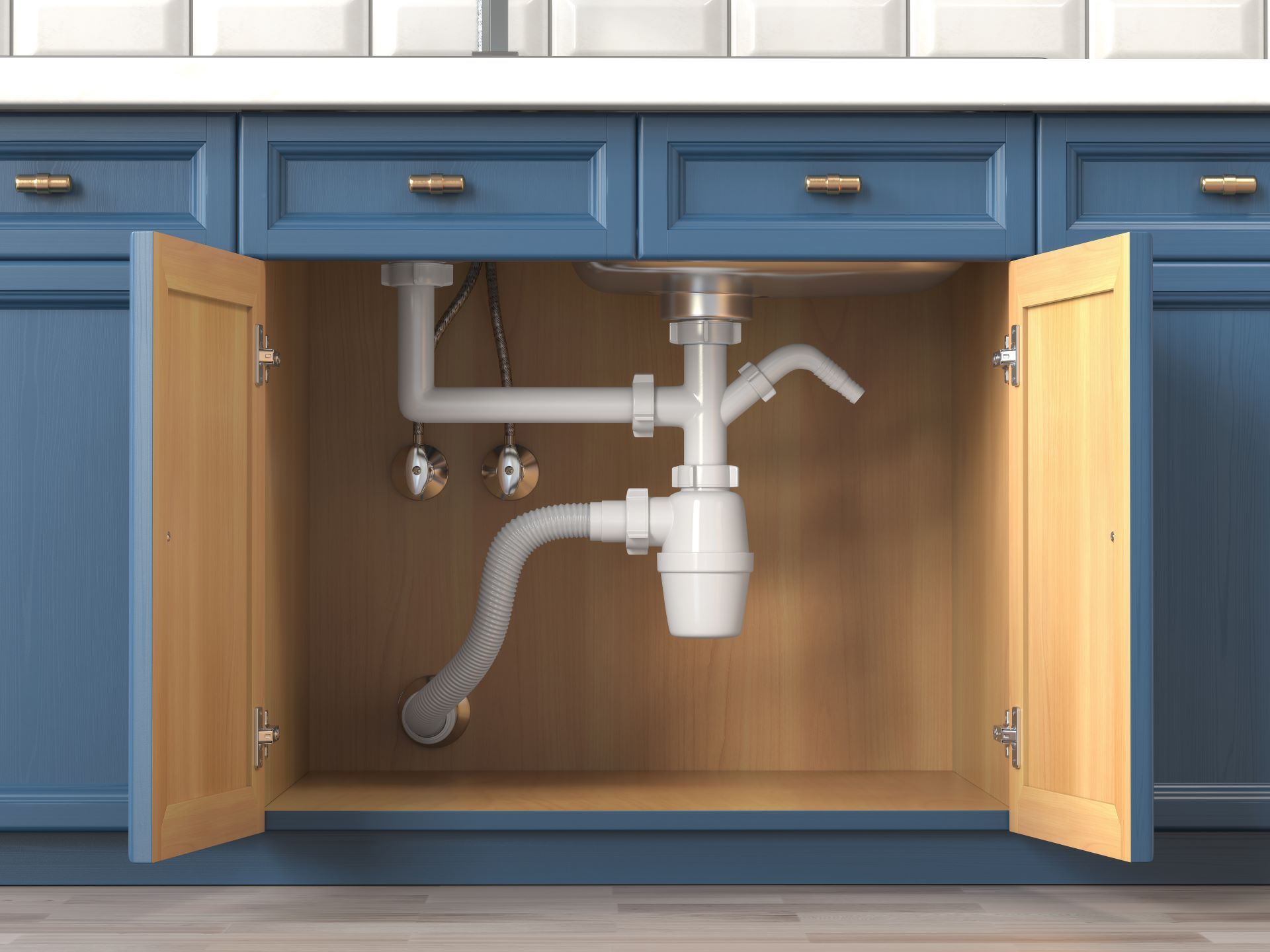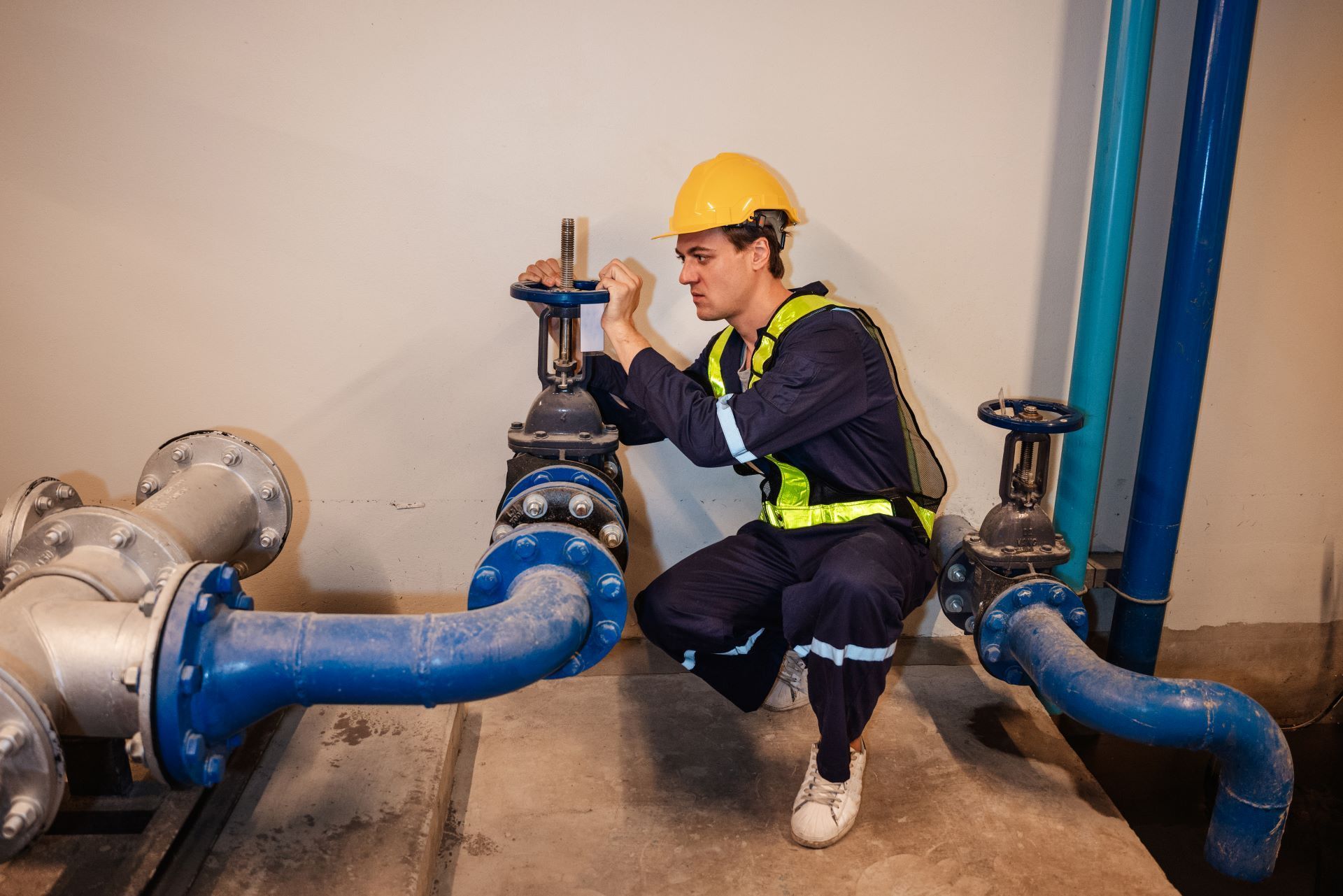Join the Lutz Loyalty Club and start saving today!
Quick Tips to Prevent Frozen Pipes this Winter
Nov 24, 2020
The best way to deal with frozen pipes is to prevent them. A few smart steps in early winter can ensure that your pipes don't freeze or burst this year. Let's dive into several options for frozen pipe prevention.

1. Open the Cabinets
2. Set Faucets to Slow Drip
3. Apply Heat Tape
by a line of tape. One end of the heat tape is plugged into an outlet and the filament gently warms
the length of your pipe-work. It can be applied anywhere you can reach the pipes. Self-monitoring
heat tape turns on when the temperature drops while manual heat tape is plugged in when heat is
needed for the house.
4. Wrap in Pipe Insulation
winter. Pipe insulation is a long cylinder of foam with a slid down the length so you can fit it over
your pipes. It can be cut to size, bent, stretched, and you can slice holes in it for junctions.
Apply pipe insulation wherever you can reach the pipes, starting with the pipes under each sink. Head to
the basement, garage, attic, and utility areas to find extra pipe lengths to quickly insulate.
5. Pool Noodle Insulation
6. Minimum House Heating
Consider getting a tuneup or furnace repair in your home before it gets too late.
7. Open Interior Doors
8. Close the Garage
9. Cover your Outdoor Faucets
Contact Lutz Plumbing today for assistance in frozen pipe prevention or repairs after frozen pipe damage. We can help get your home into top condition for the winter.
Share Post
Download the Lutz Plumbing App!
Schedule a Service
Membership Access
Access to Exclusive Offers
Manage Financing
... And More!
Free Safety Inspection
Free Extended Warranties
15% Discount
Free Priority Service
Member Only Specials
No Extra Charges for After Hour Service
Hundreds of Five-Star Reviews
Read why happy customers choose us over and over again.
When you have a
plumbing problem in the Kansas City area, you can rely on Lutz Plumbing to be have 24 hour response time. We are a local, family-owned business who shows up on time and ready to tackle your plumbing problems head on.
From leak detection to water heater service and installation, Lutz Plumbing gives you prompt, efficient and high quality plumbing services from knowledgeable technicians.
Read more about what hundreds of customers like you are saying about our five-star service, or call us today at
913-888-9500 and tell us about your problem today.

Dan
"We called at 6:30 on Sunday evening and Brent was at our door at 7:25 and was extremely professional and completed the work in a clean manner. We will be called Lutz Plumbing moving forward!"
Read All Reviews →
John K.
"The employees are always on time and very knowledgeable about the work to be completed. Very impressed, as always."
Read All Reviews →
Amanda
"I called 27 different plumbers at 11 at night, no one could come or they didn't answer. Brent called back 3 minutes later and came right out and fixed it right away. The price was less than other's day prices, so glad you are in business. I will always use Lutz plumbing from now on."
Read All Reviews →
Articles for Homeowners

Find Your Service Location
List of Services
-
Belton, MOBelton, MO
-
Blue Springs, MOBlue Springs, MO
-
Bonner Springs, KSBonner Springs, KS
-
De Soto, KSDe Soto, KS
-
Eudora, KSEudora, KS
-
Excelsior Springs, MOExcelsior Springs, MO
-
Gardner, KSGardner, KS
-
Gladstone, MOGladstone, MO
-
Grain Valley, MOGrain Valley, MO
-
Grandview, MOGrandview, MO
-
Independence, MOIndependence, MO
-
Kansas City, KSKansas City, KS
-
Kansas City, MOKansas City, MO
-
Lansing, KSLansing, KS
-
Lawrence, KSLawrence, KS
-
Leavenworth, KSLeavenworth, KS
-
Leawood, KSLeawood, KS
-
Lee's Summit, MOLee's Summit, MO
-
Lenexa, KSLenexa, KS
-
Liberty, MOLiberty, MO
-
Linwood, KSLinwood, KS
-
Merriam, KSMerriam, KS
-
Mission, KSMission, KS
-
North Kansas City, MONorth Kansas City, MO
-
Olathe, KSOlathe, KS
-
Overland Park, KSOverland Park, KS
-
Parkville, MOParkville, MO
-
Platte City, MOPlatte City, MO
-
Prairie Village, KSPrairie Village, KS
-
Raymore, MORaymore, MO
-
Roeland Park, KSRoeland Park, KS
-
Shawnee, KSShawnee, KS
-
Spring Hill, KSSpring Hill, KS
-
Tiffany Springs, MOTiffany Springs, MO
Local Office
21961 W 83rd St
Lenexa, KS 66227
Contact
Office Hours
Monday - Friday: 8a - 6p
Saturday: 8a - 4p
24 Hour Response
License
#20202383
Financing














